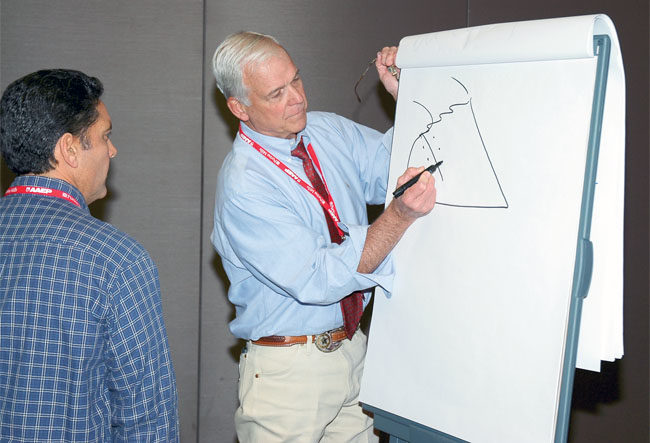American Farriers Journal
American Farriers Journal is the “hands-on” magazine for professional farriers, equine veterinarians and horse care product and service buyers.

MAKE IT HOLD. Texas A&M University equine veterinarian Bill Moyer finds the most common failure with hoof repair composites normally occurs when the patch fails to stay attached to the hoof.
When it comes to problems with composite hoof repair materials, Bill Moyer is convinced the major cause is inadequate preparation.
The equine veterinarian at Texas A&M University in College Station, Texas, says not properly preparing the hoof defect or surrounding hoof wall combined with a failure to pay close attention to detail when dealing with the adhesives is the cause of the problem.
Moyer told attendees at the American Association of Equine Practitioners meeting in San Antonio, Texas, that these kind of failures can lead to cracking and breaking of the composite materials, infection under the repair and loosening of the repair patch.
Hoof cracks, wall separations and wall loss can frequently occur. While defect size, depth, length and direction can vary with horses, Moyer says many of these concerns generally respond well with time and continued wall growth.
However, defects that cause pain, lameness, bleeding, infection or are of such size, direction or degree of separation to cause problems may require repair. The solution may be as simple as changing shoes or resting the horse or as complex as requiring acrylic or urethane-based composites, sutures or other stabilizing devices.
Moyer says most acrylic and urethane-based composite materials are simple to work with and offer excellent strength and adhesive properties. Even so, a repair or…